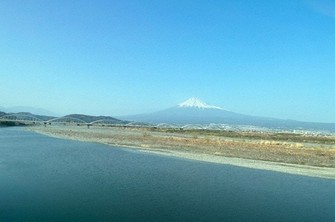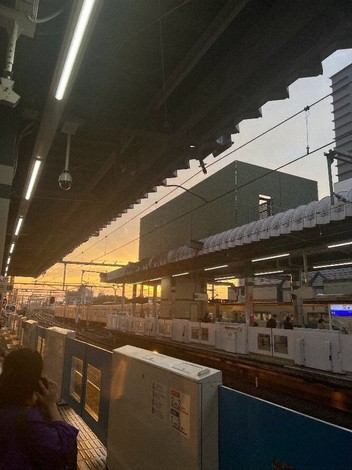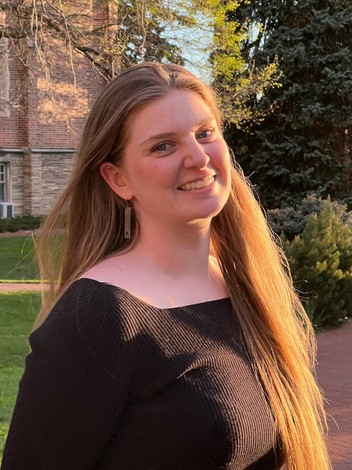
Mount Fuji is seen from the shinkansen between Tokyo and Kyoto.
I arrived in Tokyo at the tail end of the pandemic, just as the borders began to reopen. I had tried to inform myself about Japanese life and customs before arriving, but unlike the enormous city in which I had landed, my world was still narrow, contained.
The first shock came at the airport.
Haneda’s long hallways, scrubbed clean and lit with fluorescent lights, seemed endless. The only sounds were the mechanical hum of moving walkways, the roll of suitcases across the linoleum, and the muffled calls of masked airport staff in a language I couldn’t yet understand.

Train tracks extend through the Miyajimaguchi neighborhood of the Hiroshima Prefecture city of Hatsukaichi.
I had assumed the silence in the airport was temporary — pandemic-induced — and that the restraint would fall away with the help of open air. But I learned quickly that, unlike New York, Tokyo rarely raises its voice.
While I didn’t grow up in New York City, I lived close enough that I made countless weekend trips. Someone is always yelling in New York. The city smells like coffee and car exhaust, and its sidewalks are crowded with people cutting every which way. The first time I boarded the Yamanote Line, I felt like I had landed on another planet. It was morning — rush hour — but the train car was surprisingly still. Bodies pressed together, faces bent over screens, mouths closed, some eyes closed. No one jostled. No one stared. Each person, it seemed, had folded themselves into their own neat little world.
Ikebukuro Station devoured me whole in those first few weeks. No matter how much I stared at maps on my phone or read the signs, I found myself walking against currents of people in unfamiliar corridors. I must have looked ridiculous. I’m sure I annoyed more than a few office workers. I stopped in the middle of foot traffic, turned in circles, retraced my steps. People flowed around me like water around a rock.
But something slowly shifted. The routines that once overwhelmed me settled into a kind of comfort. My commute to and from campus became a time when I could relax. Forty minutes each way, I learned to take advantage of that time; everyone else had: watching videos, playing games, nodding off to music. I downloaded episodes of dramas, studied with flashcard apps, and listened to music. I began looking forward to it — the melody that played over the loudspeakers, the gust of air as the train pulled in, the moment the doors slid open. I enjoyed it all.

This photo shows Nerima Station at sunset.
After a year, I returned to the United States to finish university. The transition was loud. My body had adjusted to the quiet so it took time to remember how to exist in noise. Eventually, I found a video online — the loop of the Yamanote Line, station by station, in real time. I played it while I studied. I still do. At times, I find myself humming the Takadanobaba melody, a fragment of Tokyo’s rhythm that has followed me.
(By Kaylee Mendelman)
Profile:

Kaylee Mendelman
Kaylee Mendelman graduated from the University of Denver with a Bachelor of Arts in Anthropology and International Relations, and a minor in Japanese. During her third year, she studied abroad at Waseda University in Tokyo, where she also spent time traveling throughout Japan. She has since returned to Japan and is currently living in Kochi Prefecture, working as an English teacher.
(This is Pt. 7 of a series. Subsequent parts will be published intermittently.)


AloJapan.com